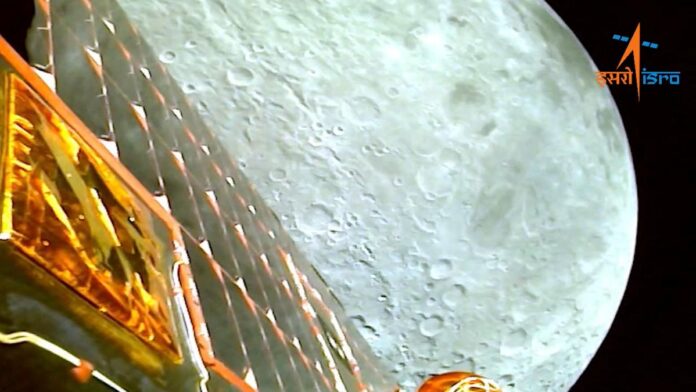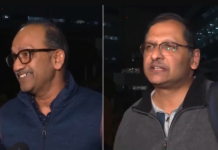
The Indian Space Research Organisation (ISRO) successfully completed another orbit lowering manoeuvre of India’s third moon mission, Chandrayaan-3, on August 9.
The operation was carried out from the ISRO Telemetry, Tracking, and Command Network (ISTRAC) facility in Bengaluru. The spacecraft is now only 1,437 km from the moon.
“Even closer to the moon’s surface,” said ISRO. Following today’s manoeuvre, Chandrayaan-3’s orbit has been decreased to 174 km x 1437 km. The next operation will take place on August 14, 2023, between 11:30 and 12:30 p.m. IST.”
The fifth and final orbit reduction manoeuvre will take place on August 16.
On July 14, the Chandrayaan-3 was launched. It comprises three modules: a lander module (LM), a propulsion module (PM), and a rover.
“As the mission progresses, a series of manoeuvres have been planned to gradually reduce Chandrayaan-3’s orbit and position it over the lunar poles,” ISRO declared after the lunar orbit insertion on August 5. The propulsion module will separate from the lander while in orbit after several movements. Following that, a series of sophisticated braking operations will be performed to ensure a smooth landing in the Moon’s south polar area on August 23, 2023.”
The separation of the PM and LM would take place on August 17. Before the power descent phase for soft-landing on the moon, a number of de-boost manoeuvres are planned. The lander is scheduled to land on the lunar surface at 5.47 p.m. on August 23.
Even if the sensors fail, the lander will land
ISRO Chairman S. Somanath stated on August 8 during a talk on Chandrayaan-3 Bharat’s Pride Space Mission that even if all sensors fail as the space agency seeks to conduct a soft landing on the lunar surface on August 23, the lander will still be able to land.
“Even if all of the sensors fail, we’ll be able to land as long as the propulsion system works.” We will be able to land even if both engines fail. “That’s how the design was created,” Mr Somanath explained.
He went on to say that this time, they made all of the systems more robust, updated the guidance architecture, and implemented newer algorithms.











